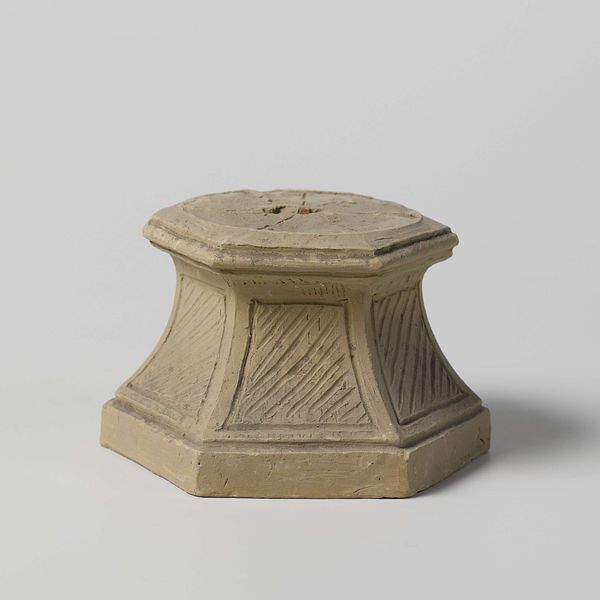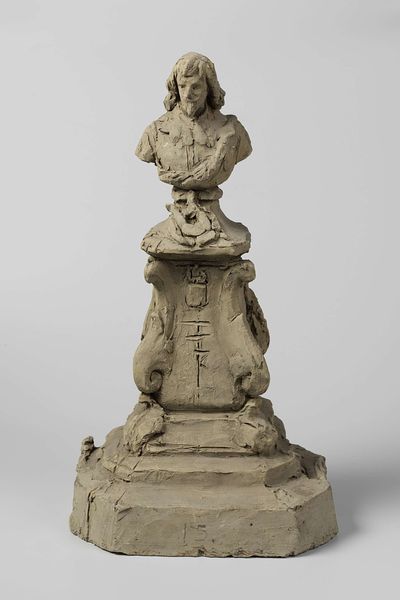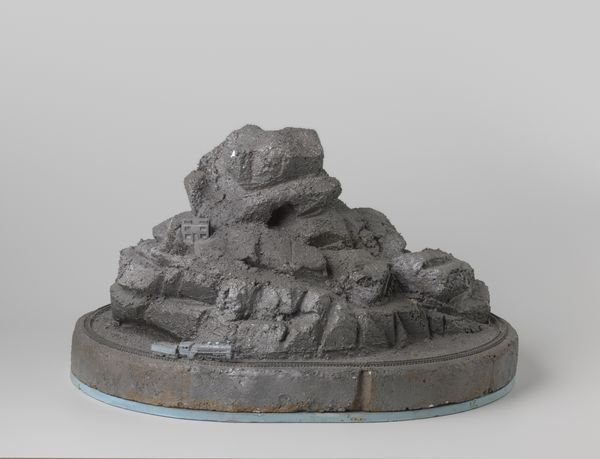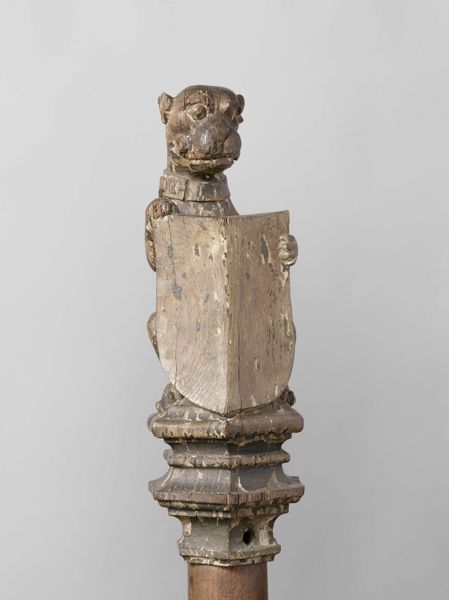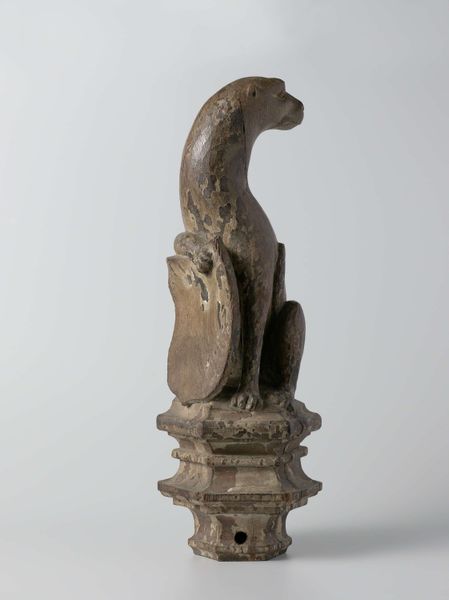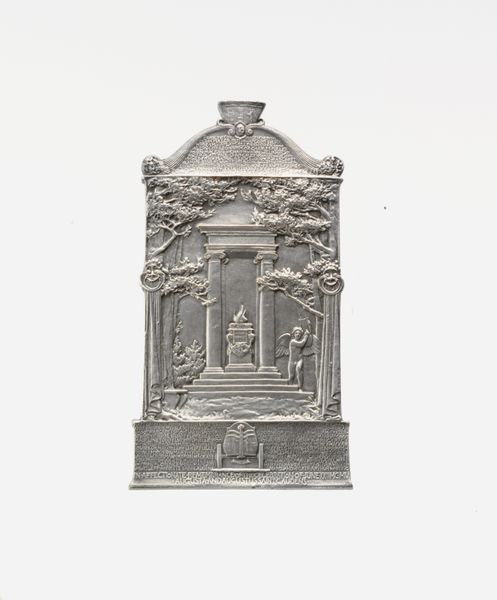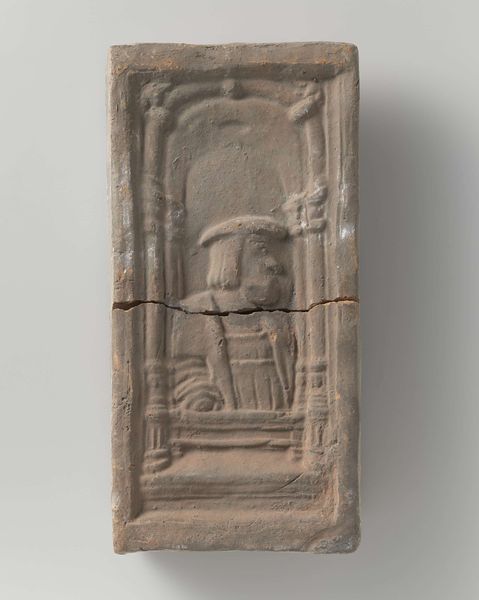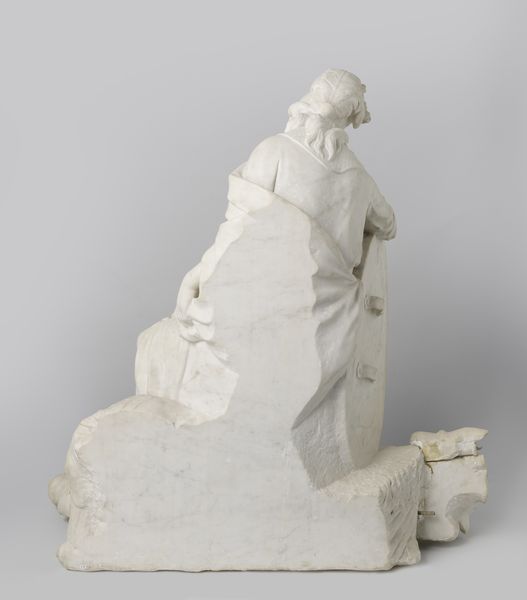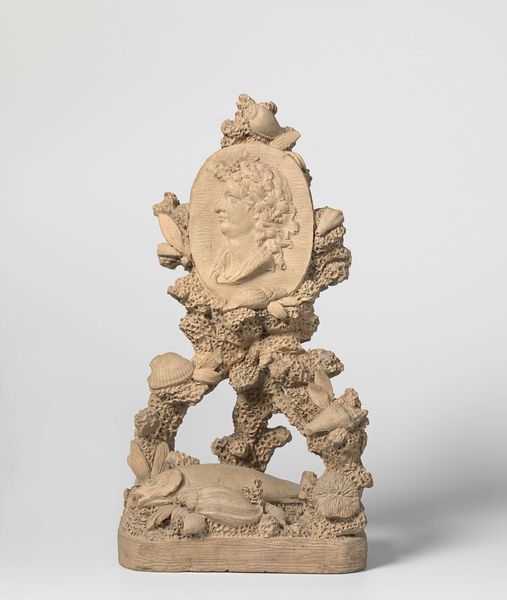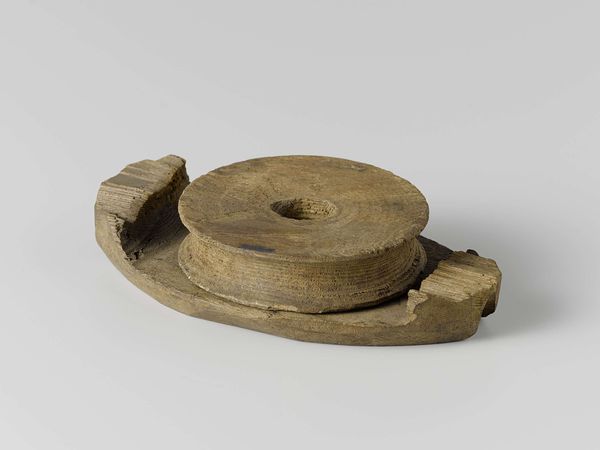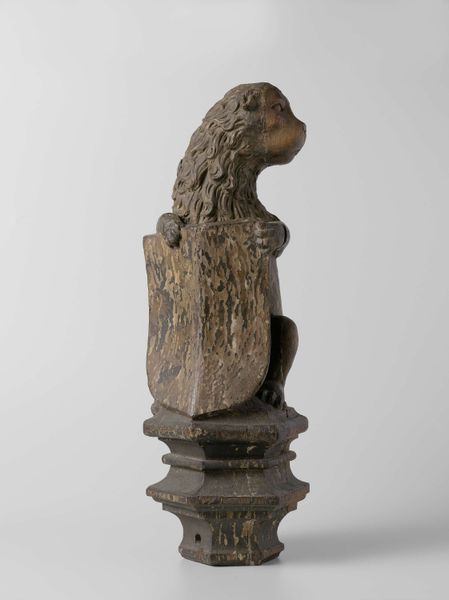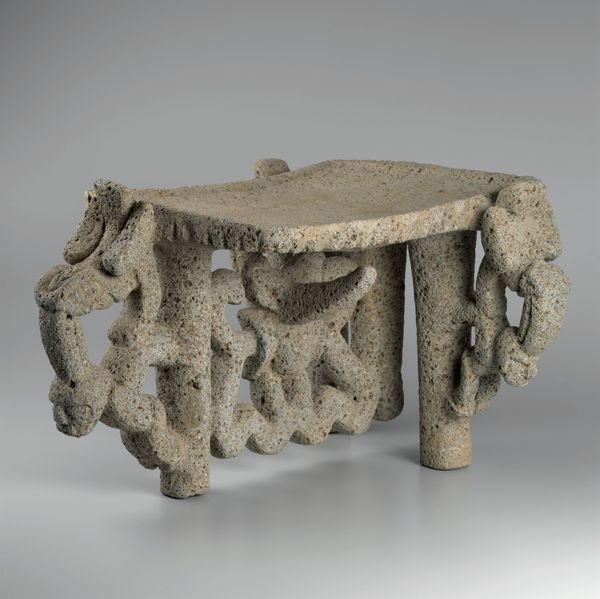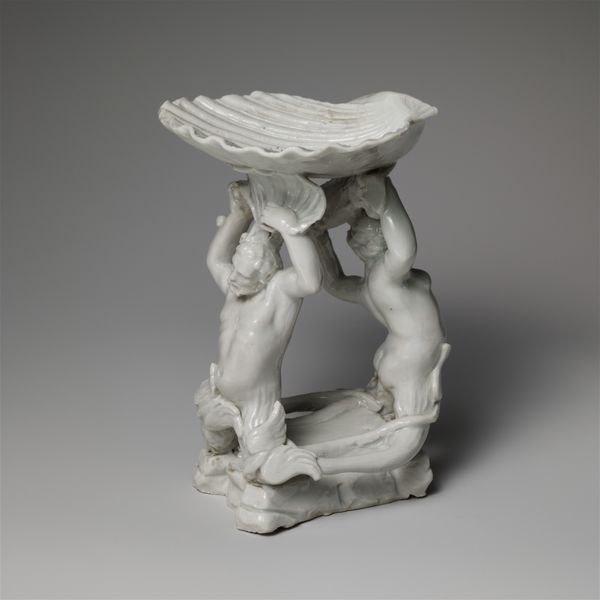
Dimensions: height 24.5 cm, width 32 cm, depth 30 cm, height 27 cm, width 40 cm, depth 40 cm
Copyright: Rijks Museum: Open Domain
Editor: This is "Schets voor een monument," a plaster maquette for a monument, created sometime between 1800 and 1950, attributed to Eugène Lacomblé. It feels both grand in its design, echoing Neoclassical ideals, and fragile because of its visible cracks. How do you interpret this work in the context of monumental art? Curator: Given its time period, it's crucial to consider this "Schets" through a lens of revolutionary fervor and subsequent attempts at societal rebuilding. Monuments are never neutral; they actively construct and reinforce specific narratives about power, history, and identity. The very act of commemorating suggests a desired social order. How do you see the tension between the desire for permanence and the fragile state of the plaster, especially regarding those historical fault lines? Editor: I hadn't considered it that way, as a narrative of desired social order that it's supposed to convey and reinforce! The cracks definitely add a layer of irony then, almost suggesting the fragility of those power structures it tried to cement. Are there specific socio-political contexts you think informed Lacomblé's design choices here? Curator: Absolutely. Consider the legacy of revolutions across Europe, and the rise and fall of empires. Neoclassicism itself, while seemingly ordered, often served as a visual language for projecting authority. Was it intended to celebrate a victory, or perhaps to mourn a loss? Look closer at the sculptural elements; are there coded messages within the geometric forms or the wreath motif on top? Do you recognize anything referencing contemporary historical events, movements or even specific figures in 19th-century Belgian society? Editor: It's fascinating to consider it as a negotiation of power through visual language. It feels less like a static object now and more like a conversation! Curator: Precisely. Understanding these historical nuances allows us to deconstruct the monument's intended message and unearth the complex social, political and artistic layers embedded within. And always question whose stories are being told, and whose are being erased in these grand narratives. Editor: I'll definitely be looking at monuments differently now. Thank you for this insight.
Comments
No comments
Be the first to comment and join the conversation on the ultimate creative platform.
